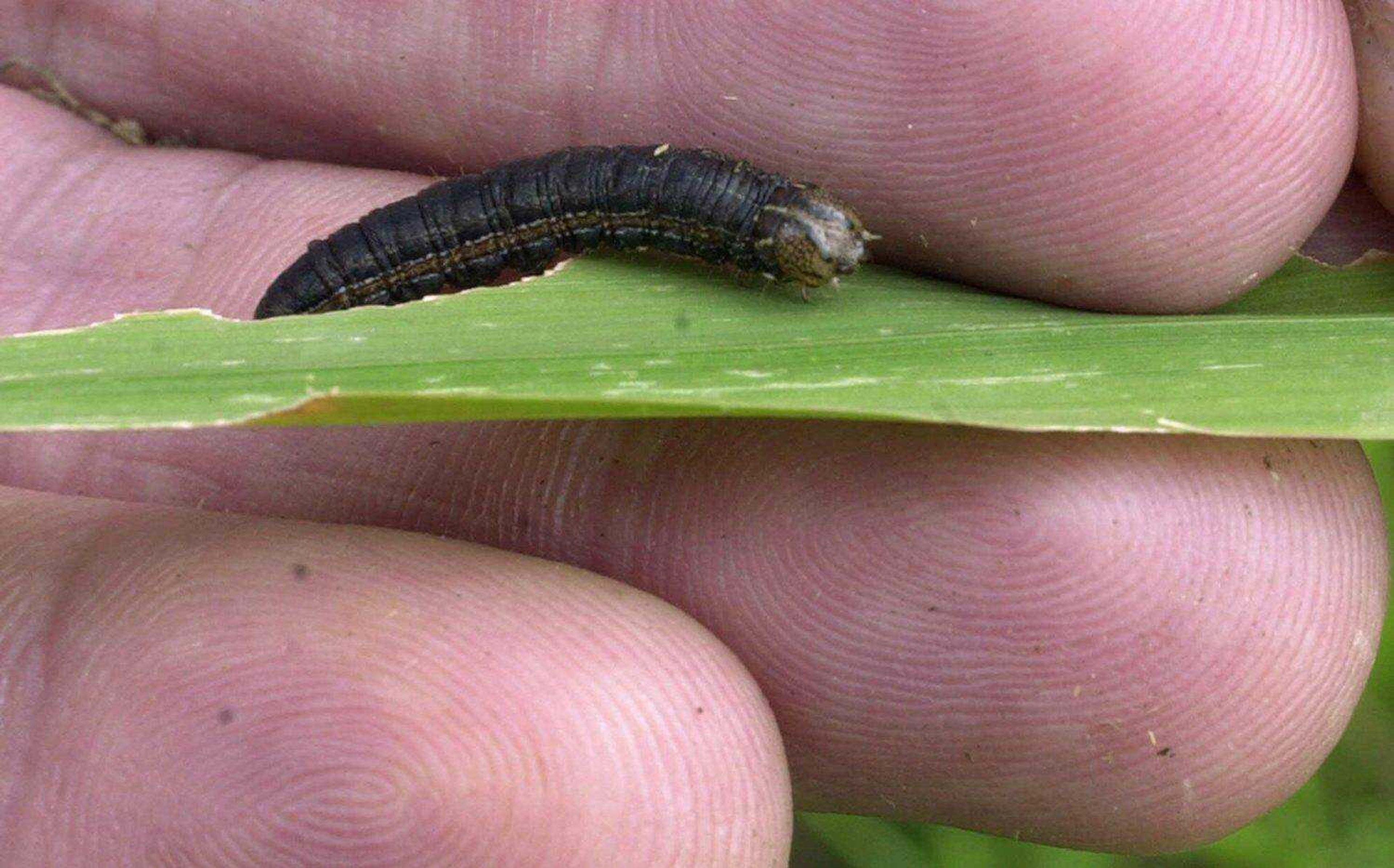I usually try to decide on a topic for a column about one to five days ahead of its due date. I wait because I want to hear what problems gardeners are having in their landscape. My column can then address current issues in gardening.
For some reason this time I wasn't able to come up with a topic until just a few hours before my deadline.
Of course, I now know why I haven't been able to come up with a topic. Within the last two hours I have received three phone calls about the same problem showing up in lawns: yellow-striped armyworms. Sometimes you have to procrastinate in order to discuss the current topic, though I don't think my wife always agrees with my way of thinking.
My first conversation was with a gardener who brought in samples of worms that were invading his lawn. He said he was sitting on the front porch and looked out over his lawn and saw grass blades shaking. Because there was no wind stirring, he thought it was odd. He got up and began to investigate. He found the worms and collected them to bring to me for identification.
Since that conversation I have had three others like it, so I know the armyworm problem is affecting a lot of gardeners in Southeast Missouri.
Although armyworm infestations are not common in this area, they are not unheard of. The adult is a gray moth that lays up to 80 eggs on soil or just below the soil surface. The eggs hatch into caterpillars or worms, which then eat grass leaves and shoots. After a short feeding period, these worms pupate. Then the adult emerges and the cycle repeats itself. It is common for up to four generations to be produced per year.
The name armyworm is derived from the fact that the populations can become so large that they move in hordes or waves of caterpillars. They can damage lawns if the infestation is high enough for the caterpillars to eat not only the leaves and shoots but also the crown (growing point) of lawn grasses.
The armyworm caterpillar is about an inch long. The body color is gray/tan to dark brown/black. On each side of the worm is a wide yellow stripe, hence the name, yellow armyworm. The back of the worm has three or four narrow yellow stripes. The head is usually dark brown to black.
If there is an infestation of armyworms in your lawn, you may notice large flocks of starlings pecking in the grass. Welcome them to your landscape because they are gorging themselves on the armyworms that are damaging your lawn.
If you don't have this natural control, you will need to treat the lawn with an insecticide. Permethrin or malathion are good options. If you can, spray the pesticide in a liquid form. This works well if you drench your lawn with diluted spray. It is recommended that you put up to five or 10 gallons of spray down per 1,000 square feet.
If you can't put down this amount of spray per 1,000 square feet, then spray during a light rain or be sure to turn on your sprinkler immediately after spraying. You want to make sure that you get the insecticide to the worm.
An alternative treatment is the application of permethrin, bifenthrin or imidacloprid in granular form. After application, water your lawn thoroughly.
Although armyworms are not common, they can be damaging when they do show up. Either invite the starlings for a feast or treat your lawn with the appropriate insecticide to prevent damage.
Send your gardening and landscape questions to Paul Schnare at P.O. Box 699, Cape Girardeau, MO 63702-0699 or by e-mail to news@semissourian.com.
Connect with the Southeast Missourian Newsroom:
For corrections to this story or other insights for the editor, click here. To submit a letter to the editor, click here. To learn about the Southeast Missourian’s AI Policy, click here.










